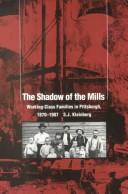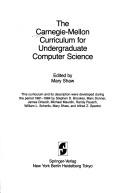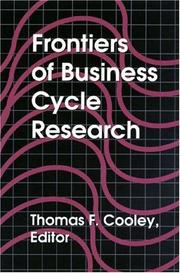| Listing 1 - 7 of 7 |
Sort by
|
Book
Year: 1910 Publisher: New-York: Charities publication committee,
Abstract | Keywords | Export | Availability | Bookmark
 Loading...
Loading...Choose an application
- Reference Manager
- EndNote
- RefWorks (Direct export to RefWorks)
Book
ISBN: 9781580935234 1580935230 Year: 2019 Publisher: New York: The Monacelli Press,
Abstract | Keywords | Export | Availability | Bookmark
 Loading...
Loading...Choose an application
- Reference Manager
- EndNote
- RefWorks (Direct export to RefWorks)
In the 1950s and '60s an ambitious program of urban revitalization transformed Pittsburgh and became a model for other American cities. Billed as the Pittsburgh Renaissance, this era of superlatives-the city claimed the tallest aluminum clad building, the world's largest retractable dome, the tallest steel structure-developed through visionary mayors and business leaders, powerful urban planning authorities, and architects and urban designers of international renown, including Frank Lloyd Wright, I.M. Pei, Mies van der Rohe, SOM, and Harrison & Abramovitz. These leaders, civic groups, and architects worked together to reconceive the city through local and federal initiatives that aimed to address the problems that confronted Pittsburgh's postwar development. Initiated as an award-winning exhibition at the Carnegie Museum of Art in 2014, Imagining the Modern untangles this complicated relationship with modern architecture and planning through a history of Pittsburgh's major sites, protagonists, and voices of intervention. Through original documentation, photographs and drawings, as well as essays, analytical drawings, and interviews with participants, this book provides a nuanced view of this crucial moment in Pittsburgh's evolution. Addressing both positive and negative impacts of the era, Imagining the Modern examines what took place during the city's urban renewal era, what was gained and lost, and what these histories might suggest for the city's future.
Architecture --- Architecture, Modern --- City planning --- Architecture and society --- Urbanisme --- Architecture et société --- Pittsburgh (Pa.) --- Pittsburgh (Penns.)

ISBN: 0822954451 9780822954453 Year: 1991 Publisher: Pittsburgh, Pa.: University of Pittsburgh Press,
Abstract | Keywords | Export | Availability | Bookmark
 Loading...
Loading...Choose an application
- Reference Manager
- EndNote
- RefWorks (Direct export to RefWorks)
The profound disruption of family relationships caused by industrialization found its most dramatic expression in the steel mills of Pittsburgh in the 1880s. The work day was twelve hours, and the work week was seven days - with every other Sunday for rest.In this major work, S. J. Kleinberg focuses on the private side of industrialization, on how the mills structured the everyday existence of the women, men, and children who lived in their shadows. What did industrialization and urbanization really mean to the people who lived through the these processes? What solutions did they find to the problems of low wages, poor housing, inadequate sanitation, and high mortality rates?Through imaginative use of census data, the records of municipal, charitable, and fraternal organizations, and the voices of workers themselves in local newspapers, Kleinberg builds a detailed picture of the working-class life cycle: marital relationships, the interaction between parents and children, the education and employment prospects of the young, and the lives if the elderly.
Working class families --- Women --- History --- Employment --- Pittsburgh (Pa.) --- Economic conditions --- Working class families - Pennsylvania - Pittsburgh - History --- Women - Employment - Pennsylvania - Pittsburgh - History --- Pittsburgh (Pa.) - Economic conditions --- Working Class --- Social Science

ISBN: 0387960996 1461250803 9780387960999 Year: 1985 Publisher: New York, N.Y.: Springer,
Abstract | Keywords | Export | Availability | Bookmark
 Loading...
Loading...Choose an application
- Reference Manager
- EndNote
- RefWorks (Direct export to RefWorks)
-#TCPW:boek --- 681.3*K32 --- Computer and information science education: curriculum; self-assessment --- Carnegie-Mellon University --- Pittsburgh (Pa.). --- C-MU --- CMU --- Mellon Institute of Industrial Research --- Carnegie Institute of Technology --- 681.3*K32 Computer and information science education: curriculum; self-assessment --- Carnegie-Mellon University. --- Computer science --- Study and teaching. --- Study and teaching --- Informatique --- Etude et enseignement --- Carnegie Mellon University. --- Computers. --- Computer science - Study and teaching --- Carnegie-mellon
Book
ISBN: 9783868594737 3868594736 Year: 2017 Publisher: Berlin: Jovis,
Abstract | Keywords | Export | Availability | Bookmark
 Loading...
Loading...Choose an application
- Reference Manager
- EndNote
- RefWorks (Direct export to RefWorks)
Basé sur des exemples de bonnes pratiques dans des villes américaines comme Detroit, New York ou Pittsburgh, ce livre montre des cas réussis de réutilisation adaptative qui préservent l'héritage du passé industriel tout en le transformant en un ingrédient clé pour la régénération urbaine. Une ferme d'aquaponie dans une ancienne installation de conditionnement de la viande ou un chemin de fer de train de marchandises converti en un parc linéaire: ce ne sont que deux exemples réussis de la réutilisation créative et efficace de l'infrastructure industrielle abandonnée. Based on best-practice examples in American cities such as Detroit, New York, or Pittsburgh, this book shows successful cases of adaptive reuse that preserve the legacy of the industrial past while turning it into a key ingredient for urban regeneration. An aquaponics farm in a former meatpacking facility or a freight train railroad converted into a linear park: these are just two successful examples of the creative and effective reuse of abandoned industrial infrastructure. Culture, leisure, sport, research, education, design, services, production, housing, and even agriculture regenerate former factory sites and upgrade cities economically and culturally. Eight steps guide the way through the process of adaptive reuse from choosing an existing site to the vision, design, and funding, and finally their implementation. Professionals, activists, decision-makers, as well as entrepreneurs and committed citizens worldwide are therefore provided with a practical toolkit to discovering the unused potential of their city.
Public buildings --- adaptive reuse --- industrial buildings --- United States --- Réhabilitation de bâtiment --- Friche urbaine --- Friche industrielle --- Réhabilitation urbaine --- Aménagement urbain --- Reconversion de site --- Reconversion de bâtiment --- Morphologie urbaine --- Detroit --- New york --- Etats-Unis --- Verenigde Staten --- Washington, D.C --- Philadelphia --- Pittsburgh --- Chicago --- New York --- 711 --- 711.16 --- 711.4 --- 711.6 --- 72.025 --- Ruimtelijke ordening --- Herbestemming --- Stadsvernieuwing --- Stadsplanning --- Stedenbouw --- Herbruik (architectuur) --- Herbestemming (architectuur) --- 72.025.2 --- Reconversie (architectuur) --- United States of America
Book
ISBN: 0880390190 3791308750 9783791308753 Year: 1988 Publisher: Munich: Prestel,
Abstract | Keywords | Export | Availability | Bookmark
 Loading...
Loading...Choose an application
- Reference Manager
- EndNote
- RefWorks (Direct export to RefWorks)
Ce catalogue d'exposition du Carnegie Museum of Art de Pittsburgh en Pennsylvanie reprend les oeuvres (sculpture-peinture) d'une série d'artistes contemporains.En fin de catalogue, l'oeuvre ayant remporté le prix Carnegie 1988 est reprise.
Painting --- installations [visual works] --- Art --- painting [image-making] --- Nauman, Bruce --- Murray, Elisabeth --- Halley, Peter --- Warhol, Andy --- Baumgarten, Lothar --- Shapiro, Joel --- Kirkeby, Per --- Armajani, Siah --- Bleckner, Ross --- Levine, Sherrie --- Fabro, Luciano --- Kounellis, Jannis --- Weiss, David --- Schnabel, Julian --- Förg, Günther --- Viola, Bill --- Kiefer, Anselm --- Beuys, Joseph --- Martin, Agnes --- Anselmo, Giovanni --- Ryman, Robert --- Kapoor, Anish --- Twombly, Cy --- Rothenberg, Susan --- Polke, Sigmar --- Vaisman, Meyer --- Baselitz, Georg --- Marden, Brice --- Fischli, Peter --- Solano, Susana --- Horn, Rebecca --- Blume, Anna --- Wall, Jeff --- Clemente, Francesco --- Fritsch, Katharina --- Richter, Gerhard --- Trockel, Rosemarie --- Koons, Jeff --- Laib, Wolfgang --- Blume, Bernhard --- anno 1900-1999 --- Art contemporain --- Contemporary [style of art] --- hedendaagse kunst --- Carnegie Museum of Art [Pittsburgh, Pa] --- Murray, Elizabeth

ISBN: 069104323X 9780691043234 0691218056 Year: 1995 Publisher: Princeton (N.J.) : Princeton university press,
Abstract | Keywords | Export | Availability | Bookmark
 Loading...
Loading...Choose an application
- Reference Manager
- EndNote
- RefWorks (Direct export to RefWorks)
Among the most revolutionary and productive areas of economic research over the last two decades, modern business cycle theory is finally made accessible to students and professionals in this rigorous, unified, introductory volume. This theory starts with the view that growth and fluctuations are not distinct phenomena to be studied separately - and that business cycles result from shocks (such as the availability of new technologies), which regularly affect most economies. The unifying theme of this book is the use of the neoclassical growth framework to study the economic fluctuations associated with the business cycle. Presenting recent advances in dynamic economic theory and computational methods - with emphasis on the construction of equilibrium paths for simple artificial economies - leading experts orient readers in the quantitative study of aggregate fluctuations and apply its concepts to key issues in macroeconomics and business cycle theory.
Business cycles --- Research --- History. --- 330.33 --- -AA / International- internationaal --- 331.060 --- 331.030 --- 304.4 --- 331.05 --- 331.00 --- 338.542 --- Economic cycles --- Economic fluctuations --- Cycles --- Financial crises --- Conjunctuurtheorieen. Krisistheorieen. Kondratiefcyclus --- -History --- Beïnvloeding van de economische bewegingen: algemeenheden. --- Conjunctuurschommelingen: algemeenheden. --- Cyclische veranderingen. --- Econometrische analyse van de economische bewegingen en cycli. --- Economische bewegingen: algemeenheden. --- 330.33 Conjunctuurtheorieen. Krisistheorieen. Kondratiefcyclus --- AA / International- internationaal --- Research&delete& --- History --- Cyclische veranderingen --- Economische bewegingen: algemeenheden --- Conjunctuurschommelingen: algemeenheden --- Econometrische analyse van de economische bewegingen en cycli --- Beïnvloeding van de economische bewegingen: algemeenheden --- Afio-American. --- Barkley, Alben W. --- Byrd, Harry F. --- Civilian Conservation Corps (CCC). --- Clark, Kenneth B. --- Costigan, Edward P. --- Daniels, Jonathan. --- Dawson, William L. --- Farley, James A. --- Hill, T. Arnold. --- Hopkins, Harry. --- Jones, J. Raymond. --- Kent, Frank R. --- McDuffie, Elizabeth. --- Mclntyre, Marvin. --- Neal, Claude. --- New York Amsterdam News. --- New York City. --- Oxley, Lawrence A. --- Pittsburgh Courier. --- Randolph, A. Philip. --- Robinson, Joseph T. --- Smith, Alfred Edgar. --- Stimson, Henry L. --- Talmadge, Eugene. --- Tuskegee Institute. --- antilynching legislation. --- election of 1936. --- lynchings. --- patronage. --- Cycles economiques --- Macroeconomie. --- Business cycles. --- BUSINESS & ECONOMICS --- Business economics --- Economics --- Industrial management --- Management --- Microeconomics --- Recherche. --- Research. --- General. --- Histoire --- Business cycles - Research - History. --- Analyse macroéconomique --- Économie globale --- Macro-économie --- Macroéconomie --- Économie politique --- Cycles d'affaires --- Fluctuations économiques --- Conjoncture économique --- Crises économiques --- Cycles financiers --- Cycles longs (économie politique) --- Cycles majeurs (économie politique) --- Développement économique --- Multiplicateur (économie politique) --- Prévision économique --- Récessions --- Stabilisation économique --- Stagnation (économie politique) --- Surproduction --- Logiciels --- Modèles mathématiques --- BUSINESS CYCLES --- RESEARCH --- HISTORY
| Listing 1 - 7 of 7 |
Sort by
|

 Search
Search Feedback
Feedback About UniCat
About UniCat  Help
Help News
News